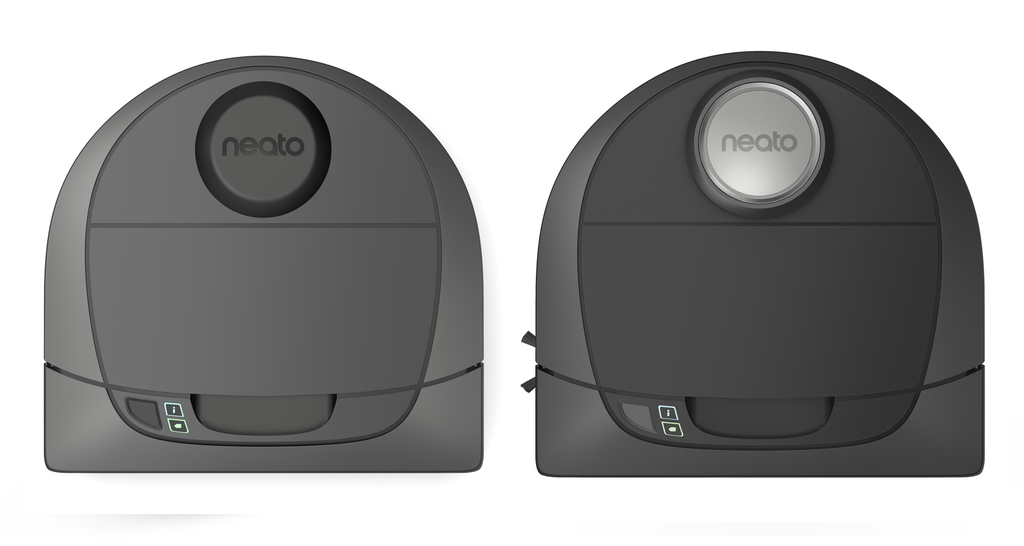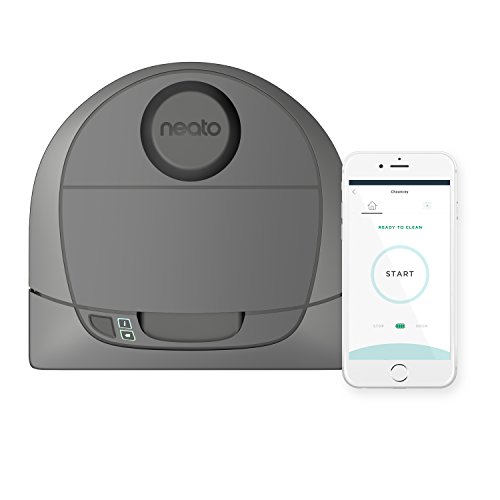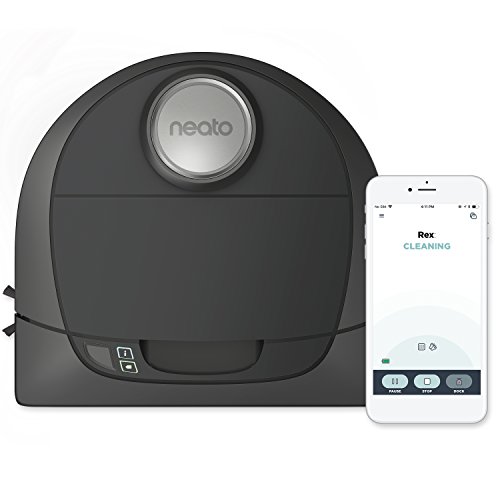We live in a world where robots are taking over. However, this isn’t some Isaac Asimov tale, at least not yet. For now, the robots are still willing to help us. Cleaning our floors is the job of many robot vacuums. Until the Singularity does occur, the Neato BotVac D3 and Neato BotVac D5 might be the robots you are looking for.
In this article, I will compare the “connected” versions of the BotVac D3 and D5. I will show you what they have in common and what they don’t. I will also give you an in-depth rundown of their features and help you decide which one is best for you. Read the entire article below for all the details. If you want to know the winner: I choose the Neato BotVac D5 Connected as today’s winner.
Contents
The Differences
Not all robots are created equal. Even when they have so much in common. Here are the differences between the D3 and the D5.
- The filtration in the BotVac D3 is standard where the D5 uses “Ultra Performance” filters.
- The BotVac D5 has a high capacity battery that doubles the life over the BotVac D3.
- Containment tape comes with the purchase of the Neato D5 but is a separate purchase with the D3.
- The D5 uses a combo brush roll and a side brush where the D3 doesn’t have a side brush.
The Similarities
Virtually everything else is identical in the two machines. Here is a rundown of the most important similar features.
- Both the D3 and the D5 have full bin indicators to tell you it is time to empty the collection bin.
- Each of the models will connect to your home’s wireless network.
- You can control both the BotVac D3 and the BotVac D5 with a mobile app or voice commands.
- The two vacuums will automatically recharge when the batteries get low.
- They will also both automatically resume cleaning once the batteries are charged.
- Both models can be scheduled for future cleaning cycles.
- You have the option of a spot cleaning with either the D3 or the D5.
- Each unit comes with a one year warranty.
Side by Side Comparison Chart
I will now show you the two machines in a side by side comparison chart so you can see how they stack up against each other.
| Neato BotVac D3 Connected | Neato BotVac D5 Connected | |
| Dimensions | 12.6×13.2×3.9 inches | 12.6×13.2×3.9 inches |
| Weight | 7.5 pounds | 7.5 pounds |
| Battery | 2600mAh Lithium-ion | 3600mAh Lithium-ion |
| Battery Charge Time | 3 hours | 4 hours |
| Battery Run Time | Up To 60 minutes | Up to 120 minutes |
| Cleaning Area | Up to 1800 square feet | Up to 4500 square feet |
| Automatic Recharge | Yes | Yes |
| Entire Level Cleaning | Yes | Yes |
| Navigation | Laser Smart Technology | Laser Smart Technology |
| Filter | Standard | Ultra |
| Full Bin Indicator | Yes | Yes |
| Wireless Communication | Yes | Yes |
| Mobile App | Yes | Yes |
| Voice Control | Yes | Yes |
| Main Brush | Combo Brush Roll | Combo Brush Roll |
| Side Brush | No | Yes |
| Scheduling | Yes | Yes |
| Spot Clean | Yes | Yes |
| Containment | Magnetic Tape (Not Included) | Magnetic Tape |
| Warranty | 1 year | 1 Year |
| Price | Check on Amazon | Check on Amazon |
Dimensions, Features and Options
Let’s dive into the machines and get a close up look at their features, options and abilities.
1. The Batteries
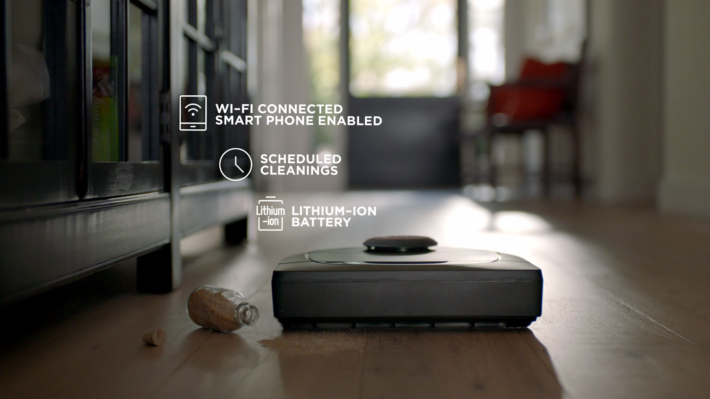
Both of the BotVacs utilize a lithium-ion battery pack. These are improvements over Nickle-Metal Hydride batteries as they last longer, recharge faster and hold a charge longer. The difference here is the size of the batteries and their capabilities.
The BotVac D3 has a 2600 mAh battery pack where the D5 has a 3600 mAh pack. This is a rather large difference when comparing the two machines since the larger pack allows for more cleaning.
You will notice that the manuals, guides and instructions tell you that the Neato D3 will cover up to 1800 square feet per cleaning cycle and the Neato D5 will cover up to 4500 square feet. This is a bit misleading and I feel that I need to explain it to you in case you are caught up in the rather large numbers they display.
The first part to look at is the “up to” portion. While it is true that under optimal conditions you will be able to run your D3 or D5 for 60 minutes or 120 minutes (respectively), and it is also true you can see up to 1800 or 4500 square feet of coverage, the likelihood of either being common is rare.
Too many factors play a role in depleting the battery and unless you have a robot vacuum lab, you will not ever see “optimal” conditions. In truth, you can expect the D3 to run for about 40 to 45 minutes per charge and the D5 to run for about 100 minutes.
That being said, you should understand the second part of the claim: “per cleaning cycle.” When I tell you that the Neato D5 will run up to 120 minutes and clean up to 4500 square feet per cleaning cycle, they are two separate statements. This is where the confusion comes in.
We have already discussed the runtime, not we will look at the second statement. You probably assume that the little robot will run around and clean 4500 square feet and then go recharge and wait for the next cycle. Except you would be wrong (though this is what the marketing geniuses at Neato want you to think).
The fact is that Neato considers a “cleaning cycle” as three runs with two recharging stops. This means that a cycle will start cleaning, recharge, continue cleaning, recharge again, finish cleaning. In the case of the BotVac D5, for example, with a runtime of 100 minutes, and a recharge time of 4 hours, a cleaning cycle (to reach up to 4500 square feet) will take approximately 12 hours.
In the same manner, for the D3 to reach up to 1800 square feet, the same cycle will take approximately nine hours. So, while the coverage numbers may sound impressive, you now understand why they are so large.
Bottom Line: The BotVac D5 wins. A larger battery, linger runtime and more coverage equal a win.
2. Filtration
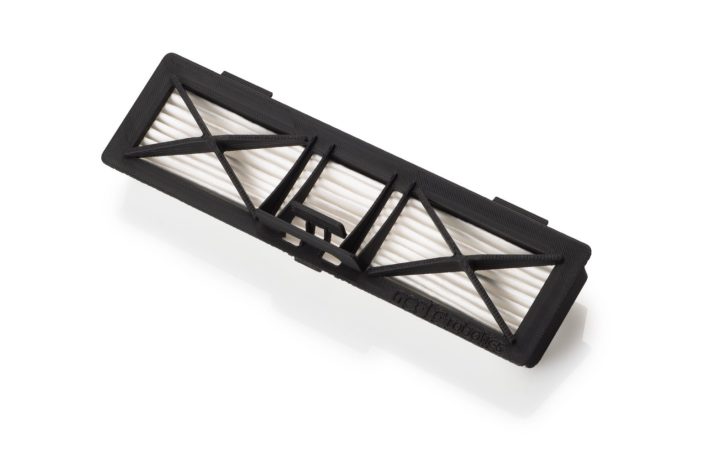
Every vacuum has a filter; most have a pre-motor filter that you can remove, clean and replace. The Neato series is no different. Neato has three types of filters they use in their machines: standard, high performance and ultra performance. The D3 uses a standard filter and the D5 uses an ultra performance.
What exactly does this mean for you though? Not a whole lot unless you suffer from allergies. The standard filter is your regular filter that can be removed, cleaned off and put back. You should also replace it about every six months of use.
It will capture most items, particles and debris preventing the motor from becoming dirty and the air output being clean. What it won’t do is capture small particles that can cause allergies to surface. Pet dander, pollen and other contaminants will pass right through the filter like it wasn’t even there.
To be certified as HEPA, a filter must collect particles down to three microns in size. This will capture up to 99 percent of all air and home allergens.
Neither of the three filter choices are officially HEPA certified. The standard and high-performance ones for sure are not. The ultra-performance filter, such as found in the D5 though, is.
While it doesn’t carry the HEPA certification, it will capture particles down to three microns in size. I am not sure why Neato doesn’t get their filter HEPA certified, as the label makes it easier to determine if it works for you. I do know that iRobot, the makers of the Roomba, have also stopped having their filters certified, even though they, too, are HEPA quality.
Whatever the case may be, the ultra performance filter captures more particles at much smaller sizes than the standard filter. It will reduce the number of allergens in your home and will help the air remain cleaner and fewer particles returning to your carpets.
Bottom Line: The BotVac D5 wins. A better filter is a better filter and the D5 has that.
3. Floor Types and Brush Rolls
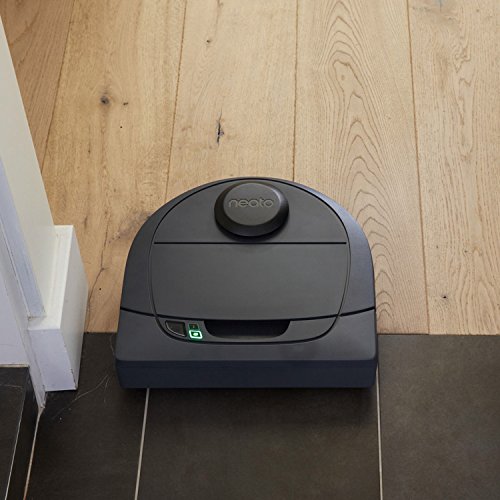
Until I started researching, reviewing and comparing robotic vacuums, I never once thought that cleaning carpet was an afterthought for a vacuum cleaner. There are some models out there that struggle cleaning even the lowest pile carpets. The BotVac D3 and D5, though, are not on that list.
Both vacuums are rated to clean all floor types. As with everything else, though, that is slightly misleading.
Yes, both machines will clean hard flooring and carpet, which is why they can make the claim of being rated for all floor types. (Note: all robotic vacuums that can claim all floor types have the same general guidelines, not just Neato.)
What they failed to mention is that you won’t have the ability to clean all hard flooring nor will the vacuums clean all types of carpeting. The robots will clean tile, laminate, hardwood and vinyl hard floors. They will also clean low to medium pile carpeting.
What you won’t get is a clean on stone, especially natural, uneven stone. This is because the brush roll will scratch and mark the sealant used in stone flooring. For the same reason, softwood floors are also not recommended. The bristles will leave small scratches here as well.
On carpeting, you will notice the vacuums struggle on high pile carpet. This, again, is due to the combo bristle brush roll. High pile carpet, shag and high pile shag will get tangled in the brush roll, and cause the vacuum to shut down until you can free it manually from the obstruction.
The other concern is cleaning along edges, baseboards and getting into corners. These are high collection places for dirt, dust and debris and your vacuum should be able to clean these areas efficiently. The design of the BotVacs allow for them to get into corners and along straight edges.
However, the BotVac D3 does not have an edge brush. Because the combo brush roll doesn’t extend past the machine even the ability for the square front to get into right angle corners doesn’t mean they will get all the debris collected there.
The D5 does have a side brush and is far more effective in corners and along edges. You will easily notice a cleaning difference in this area between the two machines.
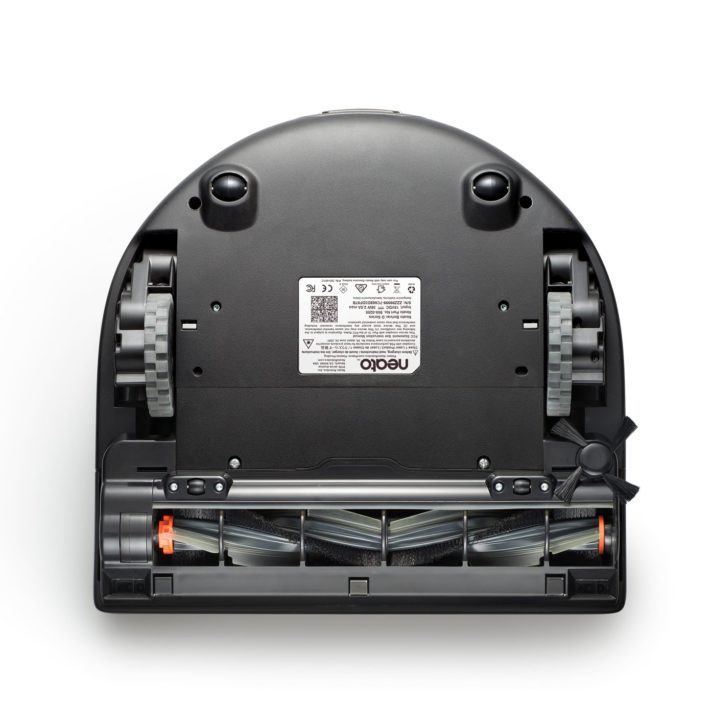
Bottom Line: The BotVac D5 wins. Both machines will clean the same flooring, but with the side brush, the D5 has the advantage in corners and along baseboards.
4. Controls
Controlling your robot is essential and Neato gives you plenty of control options. Not only do you have local controls, but you also have the ability to use a mobile app or through the wireless home connection, use voice or text commands.
The local controls are limited. You can start or stop a cleaning cycle and force the robot to return to the charging station. Simple and efficient. If you just want to start a cycle, press the clean button and off it goes.
For more precise controls, you will need to download the free mobile app and connect the robot to your wireless network. When that is done you will be able to use the app to start, stop, pause and resume cleaning cycles. You can also set the robot to spot clean and create schedules.
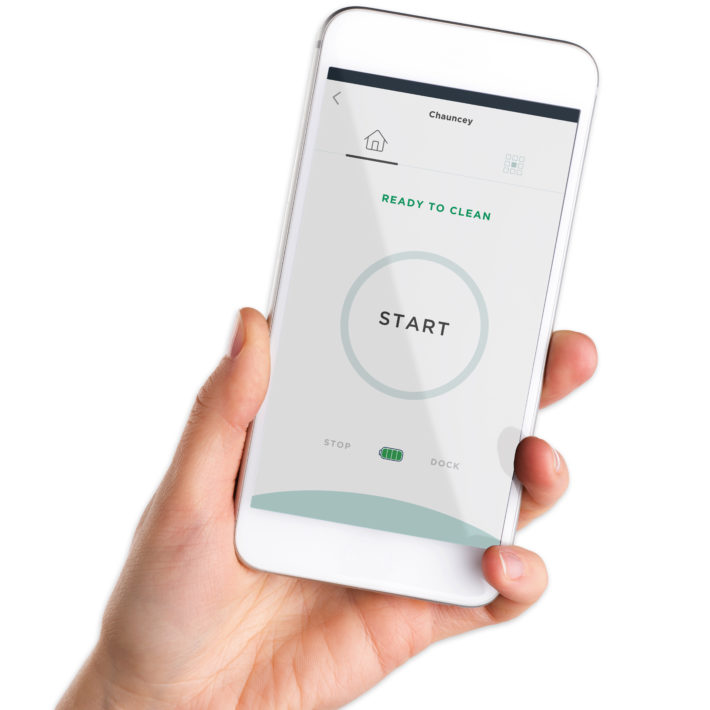
You will also get reports of where the robot is, has been and what is left as well as the ability to prevent the robot from accessing certain areas or rooms, if you so choose.
You can also fully integrate the robot with your smart home. If you have an Amazon Alexa device, Google home or run IFTTT recipes, you can link your D3 and D5 to these for voice command controls. Using your voice, you can command the robot to start or stop a cleaning cycle as well as a few other commands.
One last form of control is through Facebook Messenger. You can access the Neato Chatbot and type a message such as “start a cleaning cycle” and the message will get relayed to your robot.
Full control from anywhere at any time through the WiFi connectivity and even Facebook.
Bottom Line: This round is a tie. Both machines have the same control options.
5. Containment Options
There will be times when you don’t want every square foot of your home cleaned. There are many reasons for this and in years past you had to physically block off the area by closing doors or putting up blockades to prevent the robot from gaining access.
Now you have a couple of options for containment. The first is through the use of magnetic tape. You will receive a roll of tape when you purchase the BotVac D5. You will cut this tape to size and place it across thresholds, around floor lamps, pet food dishes, or anything else you don’t want the robot to go near.
The BotVac D5 comes with a roll of boundary tape. For the BotVac D3, though, you will need to purchase it separately.
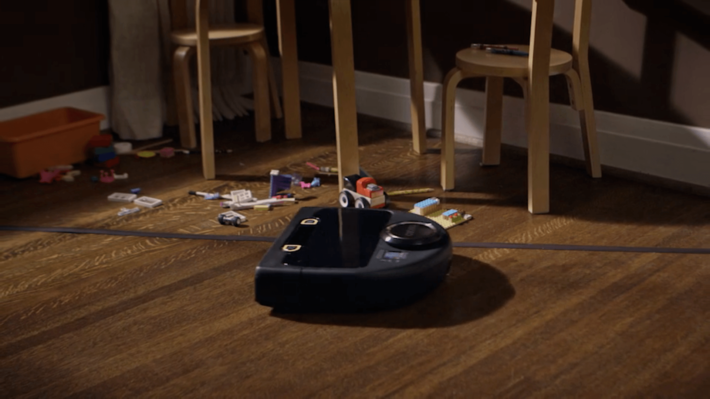
The sensors in the robot will detect the tape and avoid the area. It works well as a containment option, though it can become bothersome. Having to measure, cut, place and retrieve the tape for every cleaning cycle can become a hassle, and it is one more thing you have to remember.
The other option is through the mobile app. You can select areas that should be avoided on the navigation map and the robot will go around these areas as indicated. The issue is that this only works some of the time.
As of this writing, the app method of containment is really hit or miss. Some reports come in stating it works perfectly, every time, and others say that it hasn’t worked correctly at all.
You can test it out for yourself, as it may work for you. However, you should be home to ensure the robot obeys the restrictions before leaving it to do the cleaning without you present.
Bottom Line: The D5 wins. The inclusion of the boundary tape wins over having to make a second purchase.
Frequently Asked Questions
There are some things that not every review can cover. Because of this, there will be common questions that crop up. Here, I will answer some of the most frequently asked.
Q. How does the navigation laser work?
A. The Laser Smart technology is the name given to the navigation method of the D series robots. Each model has an infrared laser on top of the unit that scans the areas 360 degrees as the vacuum travels around.
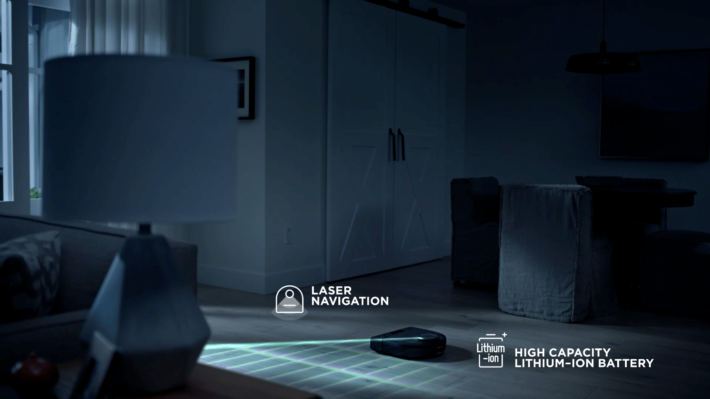
What this does is it records the distances from the robot to the object, be it furniture, a wall, etc. It then compiles the information to build a three-dimensional map of your floor plan and layout. As it continues to move around your home, the laser continues to scan.
It will be able to tell where it is on the map (once the initial scan is complete) and where it has been or where it has left to clean.
Q. How difficult is the maintenance?
A. It is as difficult as you make it. There isn’t a whole lot to do maintenance wise, but the things that you need to do are important. You should create a regular maintenance schedule to keep the robot in peak performance condition.
After every cycle, you should empty the collection bin. Keeping the bin empty will result in a more efficient cleaning cycle. Ever week or two you should also remove the filter and knock it against your trash can or dumpster to get the bigger stuff off. You can also use a hand vacuum to clean it more thoroughly. Replace the filter with a new one every two months.
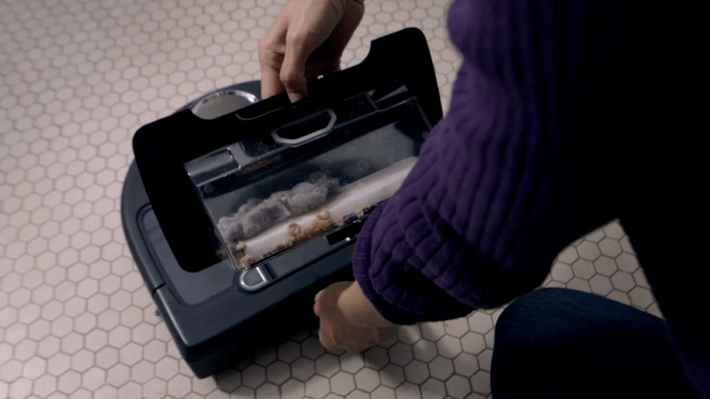
You should also check the brush roll and keep it free from obstructions. You can remove the entire roll and clean it off fairly easily. Keeping it free from tangles will prolong the life and allow the robot to clean better.
Other than that, you just need to wipe the robot clean and keep the sensor window clear, so the sensors continue to work effectively.
Q. Will the mobile app have anything extra for the D5 over the D3?
A. It does. There are two main differences. First, the mobile app will allow you to use the “Find Me” function. In the event you lose your foot wide vacuum somewhere in your home you can activate this feature and the LEDs on the robot will light up and the alert tones will repeatedly beep, allowing you to locate the missing robot.
You also gain the ability for more options when scheduling and selecting cleaning cycles. Other than that the apps are identical for each robot.
What I Like About the BotVac D3
- Laser Smart navigation works really well.
- Spot cleaning is easy to initiate and works well in heavily soiled areas.
- Automatic recharge of the battery and resuming of the cleaning cycle is almost fundamental.
What I Like About the BotVac D5
- Everything from the D3, PLUS:
- Extended battery life.
- HEPA quality filtration.
- Addition of the side brush ensures better edge and corner cleaning.
In Conclusion
Neato has a pretty impressive series of robotic vacuums that are sure to please almost everyone. With the release of the D series (named for the shape of the robot), cleaning floors is easy, efficient and intuitive. But which model is the best for you?
The BotVac D3 is a decent all around machine. With some limits on floor cleaning abilities and no side brush, it is better suited for homes without pets or small children. The effective navigation and lithium-ion battery will clean your entire home in time and ensure that your floors stay presentable.
The D5, though, is a much better option. It has a side brush, comes with the magnetic tape for containment and has better app controls. It will clean the same as the D3, but the addition of a better battery and a better filter will help those with larger floor plans and allergy sufferers.
Because of the battery, the filter and the mobile app controls, it is easy to pick the Neato BotVac D5 as the winner in today’s battle.
